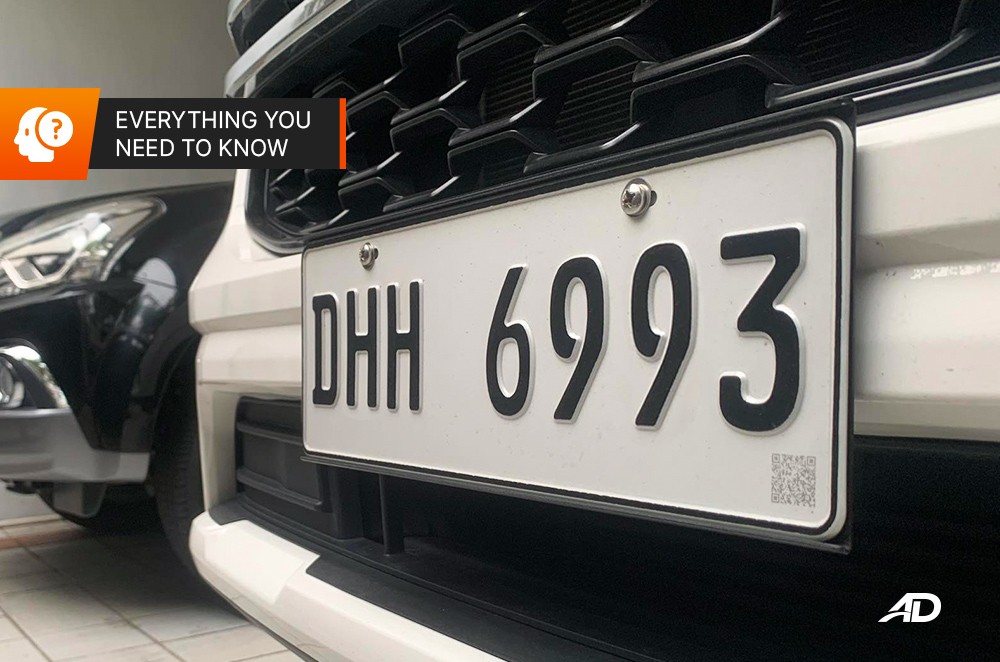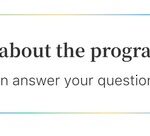Navigating the bustling streets of Metro Manila can be challenging, and understanding traffic regulations is crucial for every motorist. One of the key traffic management policies you need to know is the Number Coding Scheme. Often mistakenly referred to as “car color coding in the Philippines,” this scheme actually regulates vehicle movement based on the last digit of your license plate, not the color of your car.
This comprehensive guide, brought to you by carcodescanner.store, your trusted source for automotive expertise, will clarify everything you need to know about the Number Coding Scheme in the Philippines. We’ll delve into its rules, schedules, exemptions, and everything in between, ensuring you’re well-informed and ready to drive smart in Metro Manila.
What is the Number Coding Scheme?
The Number Coding Scheme, officially known as the Unified Vehicle Volume Reduction Program (UVVRP), is a traffic management initiative implemented by the Metro Manila Development Authority (MMDA). Its primary goal is to reduce traffic congestion in Metro Manila by limiting the number of vehicles on major roads during weekdays.
Introduced in 1995, initially on a trial basis for public utility vehicles (PUVs), the scheme has evolved to include both public and private vehicles. It restricts vehicle access to roads based on the last digit of their license plates, operating from Monday to Friday. Weekends and holidays are exempt from the Number Coding Scheme. The program was temporarily suspended during the peak of the COVID-19 pandemic, from March 13, 2020, to November 30, 2021.
Is Number Coding Currently in Effect?
Yes, the Number Coding scheme is currently in effect in Metro Manila as of June 2024. The MMDA expanded its implementation on August 15, 2022, to include both morning and evening peak hours.
Current Number Coding Hours:
- Morning: 7:00 AM to 10:00 AM
- Afternoon/Evening: 5:00 PM to 8:00 PM
- Window Hours (for coded vehicles): 10:01 AM to 4:59 PM and 8:01 PM to 6:59 AM the following day.
During “window hours,” vehicles covered by the coding scheme are allowed to travel on Metro Manila roads. However, it’s crucial to note that some cities or major roads may have different implementations or no window hours at all. We’ll discuss these exceptions in detail later.
Days Your Car is Restricted: Number Coding Days
Understanding your car’s coding day is simple. It’s determined by the last digit of your license plate number:
- Mondays: Vehicles with license plates ending in 1 and 2 are prohibited.
- Tuesdays: Vehicles with license plates ending in 3 and 4 are prohibited.
- Wednesdays: Vehicles with license plates ending in 5 and 6 are prohibited.
- Thursdays: Vehicles with license plates ending in 7 and 8 are prohibited.
- Fridays: Vehicles with license plates ending in 9 and 0 are prohibited.
Remember these pairings to easily determine your car’s “coding day” and avoid traffic violations.
Number Coding Hours: Morning and Afternoon Peak Hours
As mentioned earlier, the expanded Number Coding scheme in Metro Manila is enforced during peak traffic hours:
- Morning Rush Hour: 7:00 AM to 10:00 AM
- Afternoon/Evening Peak Hours: 5:00 PM to 8:00 PM
It’s essential to be aware of these times to avoid driving your coded vehicle during restricted hours. However, keep in mind that some cities within Metro Manila, like Makati City, implement a full-day coding scheme without window hours. Always check the specific rules of the city you’re driving in.
Window Hours: What You Need to Know
“Window hours” are periods within the day when vehicles restricted by the Number Coding Scheme are allowed to travel on covered roads. In Metro Manila, for areas implementing window hours, these are:
- Window Hours: 10:01 AM to 4:59 PM
During these hours, you can drive your vehicle even if it’s your coding day, provided you are in an area that observes window hours and not on roads with specific restrictions (Radial Roads, Circumferential Roads, and National Roads are typically not included in window hour systems).
However, it’s crucial to remember that not all areas in Metro Manila implement window hours. Makati City, for example, does not have window hours and enforces coding from 7 AM to 7 PM. Always verify the specific rules of your destination city.
Roads Covered by the Number Coding Scheme
The MMDA enforces the Number Coding Scheme on all major roads under its jurisdiction in Metro Manila. These primary thoroughfares include:
- EDSA
- C5
- Recto Avenue
- Quirino Avenue
- Araneta Avenue
- C6
- Roxas Boulevard
- Taft Avenue
- Shaw Boulevard
- Ortigas Avenue
- Magsaysay Boulevard
- Aurora Boulevard
- Quezon Avenue
- Bonifacio Avenue
- Rizal Avenue
- Del Pan
- Marcos Highway
Avoid these roads during coding hours if your vehicle is restricted on that day, unless you are within window hours (where applicable) or exempted from the scheme.
Areas Exempt from Number Coding
While the Number Coding Scheme is widespread in Metro Manila, certain areas and roads are exempt. These exemptions often include:
- Tollways: Roads operated by private entities, like:
- NAIA Expressway
- Skyway System
- South Luzon Expressway (SLEX)
- NLEX Harbor Link
- Specific Municipal Roads:
- Domestic Road
- Ninoy Aquino Avenue
- MIA Road
- Sales Road
- Parts of Airport Road
- Some parts of Buendia
It’s important to note that exemptions can vary, and some parts of even these roads might be subject to coding depending on the specific city’s regulations.
Vehicles Exempt from the Number Coding Scheme
Certain types of vehicles are exempted from the Number Coding Scheme to ensure essential services and specific needs are met. These generally include:
- Public Utility Vehicles (PUVs): This includes buses, jeepneys, and tricycles.
- Transport Network Vehicle Services (TNVS): Like Grab and Angkas.
- Motorcycles:
- Essential Service Vehicles:
- Garbage trucks
- Fuel trucks
- Fire trucks
- Government and Media Vehicles: Marked government vehicles and marked media vehicles.
- Vehicles Carrying Essential Goods: Motor vehicles transporting perishable goods.
- Medical Professionals: Doctors with valid and updated PRC licenses.
- Electric and Hybrid Vehicles: With proper LTO certification and special EV/Hybrid plates. (Note: Exemptions can be different in Makati City, see below).
Important Note for Makati City: Exemptions in Makati City are more limited. They primarily apply to:
- Vehicles carrying senior citizen BluCard holders.
- Emergency vehicles.
- Vehicles on “official functions.”
- Electric vehicles.
Electric Vehicles (EVs) and Hybrid Vehicle Exemption
Electric vehicles (EVs) and hybrid vehicles are exempt from the UVVRP due to the Electric Vehicle Industry Development Act (EVIDA) or Republic Act No. 11697. This law promotes the use of EVs and hybrid vehicles to reduce reliance on fossil fuels and lessen vehicle emissions.
To qualify for exemption, the vehicle’s Certificate of Registration must explicitly state that the model is a hybrid or electric vehicle. Special EV and Hybrid vehicle plates also help identify these vehicles for exemption purposes.
Mild Hybrids and Coding Exemption: What You Need to Know
It’s crucial to understand that not all vehicles marketed as “hybrids” are exempt from the Number Coding Scheme. “Mild-hybrid” vehicles, while offering some fuel efficiency benefits, typically cannot run solely on electric power. They use a small electric motor to assist the internal combustion engine.
Mild-hybrid vehicles are NOT exempt from the Number Coding Scheme.
Exemption is granted only to vehicles recognized by the Department of Energy (DOE) as true electric vehicles or hybrids capable of electric-only propulsion. Before purchasing a vehicle expecting coding exemption, check the DOE’s official list of recognized EVs and Hybrids to confirm eligibility.
Penalties for Number Coding Violations
Violating the Number Coding Scheme will result in a fine.
- Standard Fine: P300 to P500 (depending on the location of the violation).
This fine must be paid within seven days to avoid further penalties during driver’s license renewal.
Paying Your Number Coding Fine
Fines for Number Coding violations can be paid through various MMDA-approved channels:
- Landbank
- SM Bills Payment
- Bayad Center
- Bayad Center Partners: GCash, PayMaya, and GrabPay
The MMDA has also implemented handheld ticketing devices that allow for on-the-spot fine payments in some instances.
Number Coding Rules in Different Cities
While Metro Manila generally follows the MMDA’s Number Coding Scheme, specific rules can vary by city. Here’s a breakdown of the regulations in different cities within Metro Manila and some nearby areas:
- Alabang, Muntinlupa City: Generally no coding, except on Ayala-Alabang National Road and Alabang-Zapote Road corner Buencamino and North Gate (MMDA scheme applies). Fines in Muntinlupa City may differ from MMDA standard.
- Makati City: Full-day coding from 7 AM to 7 PM, NO window hours. Stricter exemption rules (BluCard holders, emergency vehicles, official functions, EVs). Standard P300 fine.
- Quezon City: Follows MMDA coding: 7 AM to 10 AM and 5 PM to 8 PM with window hours (10:01 AM to 4:59 PM).
- Pasig City: Follows MMDA coding: 7 AM to 10 AM and 5 PM to 8 PM with window hours (10:01 AM to 4:59 PM).
- Pasay City: Coding from 7 AM to 10 AM and 5 PM to 8 PM with window hours (10 AM to 4 PM). Exemptions on Domestic Road, Ninoy Aquino Avenue, MIA Road, Sales Road, parts of Airport Road, and parts of Buendia (Gil Puyat).
- Parañaque City: Follows standardized MMDA coding: 7 AM to 10 AM and 5 PM to 8 PM with window hours (10 AM to 4 PM).
- Mandaluyong City: Follows MMDA coding: 7 AM to 10 AM and 5 PM to 8 PM with window hours (10 AM to 4 PM).
- Manila City: Mixed implementation. Some areas follow MMDA coding with window hours, others have no window hours. Check specific locations within Manila.
- Valenzuela City: Follows MMDA coding: 7 AM to 10 AM and 5 PM to 8 PM with window hours (10:01 AM to 4:59 PM). Specific roads listed (MacArthur Highway, Maysan – Paso De Blas – Bagbaguin Road, etc.).
- Taguig City: Partially exempt. Coding applies to national roads within Taguig, including East Service Road and Manuel L. Quezon Avenue.
- San Juan City: Coding from 7 AM to 7 PM with window hours from 10 AM to 3 PM. Check for updates on MMDA alignment.
- Caloocan City: Follows MMDA coding: 7 AM to 10 AM and 5 PM to 8 PM with window hours (10 AM to 4 PM) except on Samson Road (no window hours on Samson Road).
Number Coding Outside Metro Manila
The UVVRP has extended beyond Metro Manila to other congested cities, including:
- Baguio City: Coding in selected areas, primarily tourist spots (Session Road, Burnham Park, Baguio City Market). Coding hours: 7 AM to 7 PM in the Central Business District. P500 fine.
- Cabanatuan City & Dagupan City: Adhere to the same daily license plate restriction as Metro Manila.
- Cavite Province: Previously had UVRS, but currently suspended under Provincial Ordinance 283-2020 until further notice.
Future Updates to the Number Coding Scheme
The MMDA continuously studies ways to improve traffic flow. In 2022, they considered more stringent options, including:
- Odd-Even Scheme: Odd-numbered plates banned Mondays/Thursdays, even-numbered plates banned Tuesdays/Fridays. Wednesdays no coding.
- Two-Day Ban Scheme: More complex system banning different plate number combinations two days a week.
As of now, these more drastic measures have not been implemented due to public feedback and complexity concerns. However, it’s essential to stay informed about potential future changes to the Number Coding Scheme. Keep an eye on MMDA announcements and news updates for any revisions to traffic regulations.
Stay Informed with Carcodescanner.store
Understanding the Number Coding Scheme is vital for stress-free driving in the Philippines. While often called “car color coding in the Philippines,” remember it’s based on your license plate number. By knowing the rules, exemptions, and city-specific regulations, you can navigate Metro Manila roads with confidence.
For more automotive tips, guides, and the latest updates on car regulations in the Philippines, visit carcodescanner.store – your partner in smart and informed driving.


